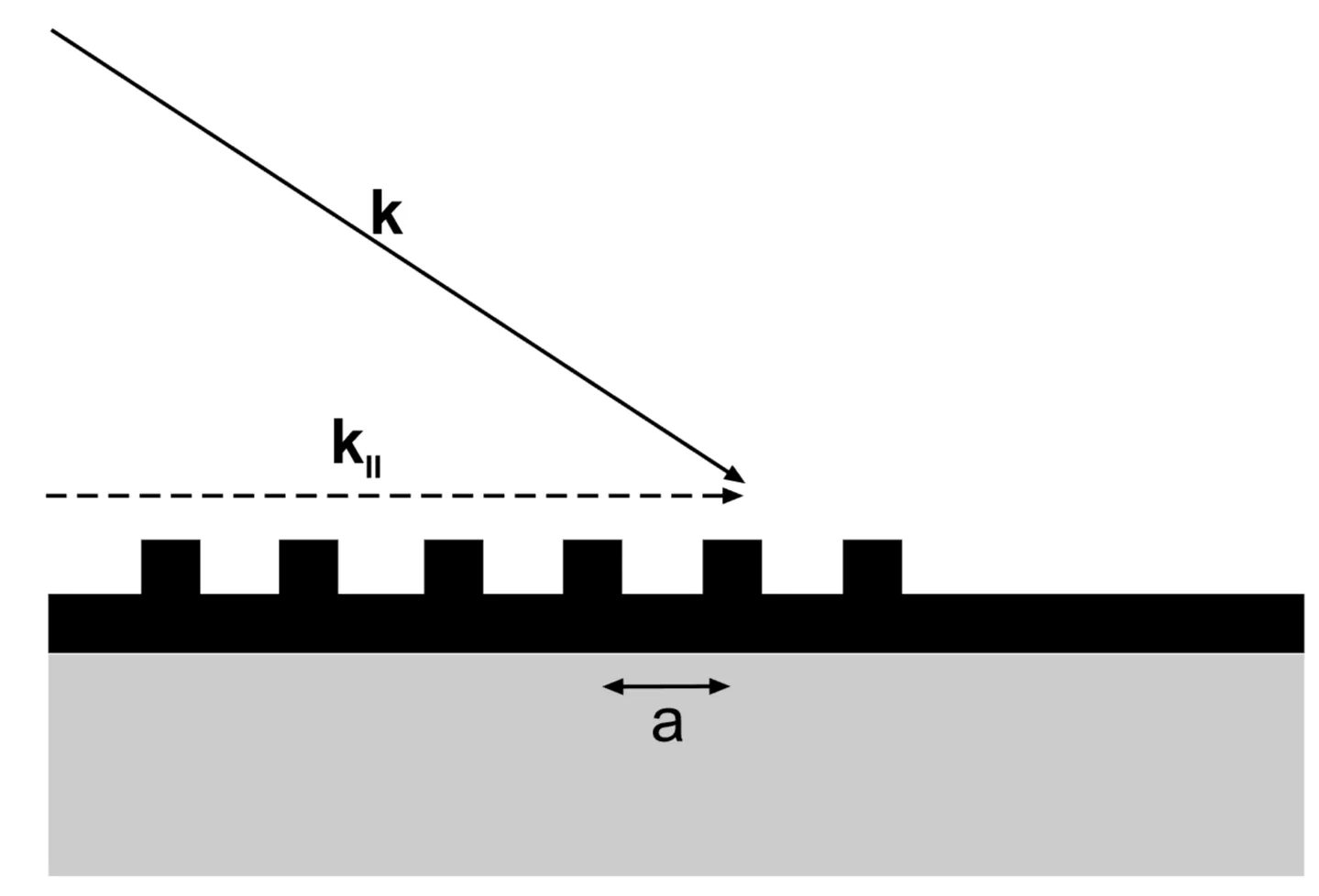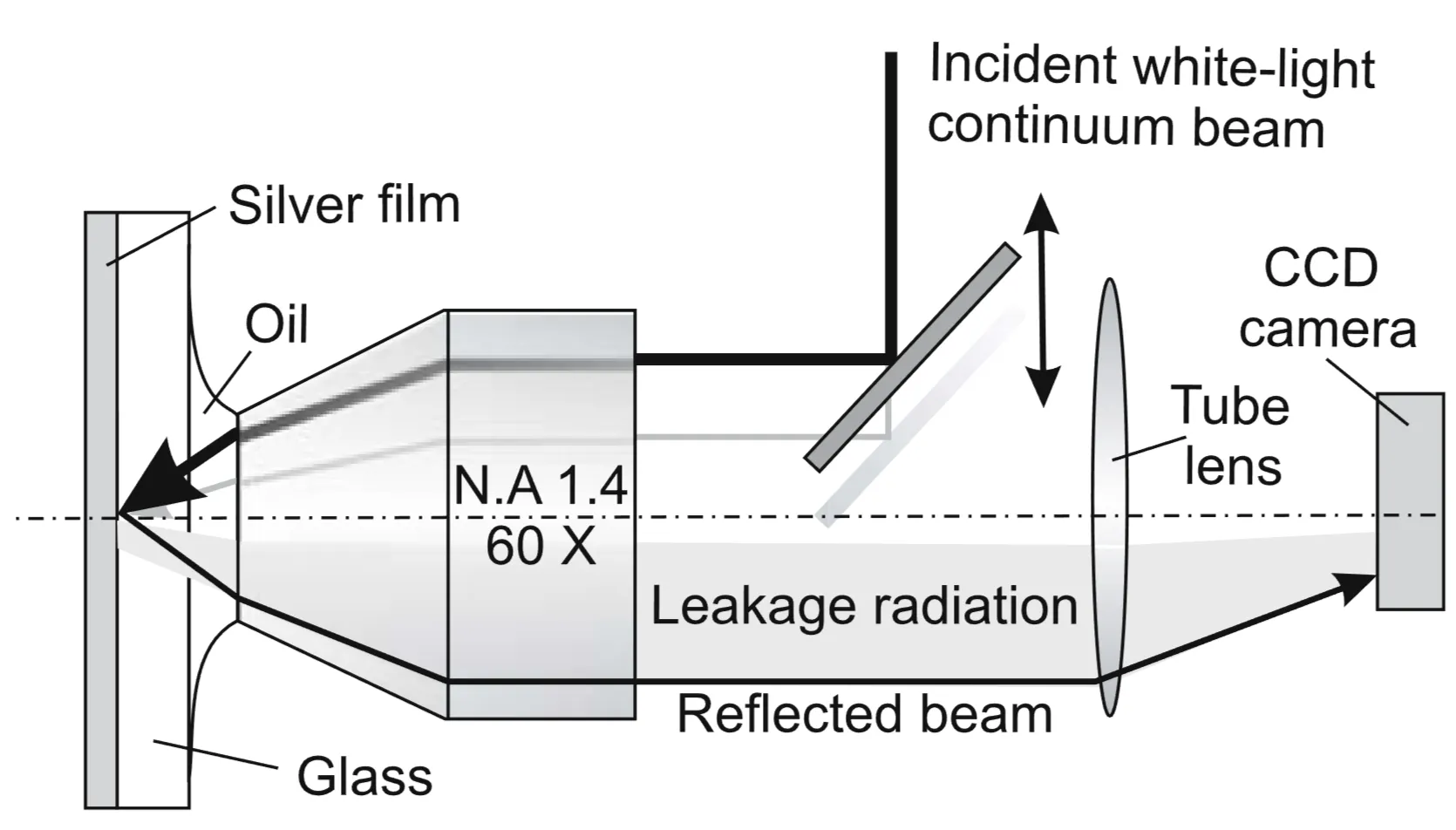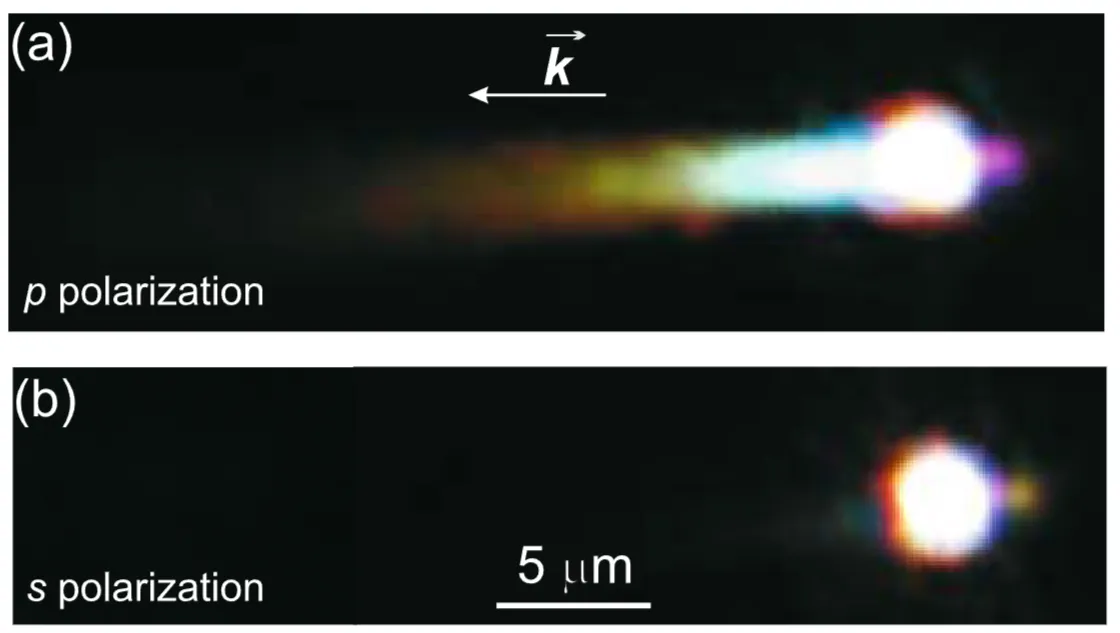Jump back to chapter selection.
Table of Contents
3 Excitation of Surface Plasmon Polaritons at Planar Interfaces
Surface plasmon polaritons propagating at the flat interface between a conductor and a dielectric are essentially two-dimensional electromagnetic waves. Confinement is achieved since the propagation constant is greater than the wave vector in the dielectric,
3.1 Prism Coupling
The projection along the interface of the momentum
This momentum is sufficient to excite SPPs at the interface between the metal and the lower-index dielectric, air in this case. In this way, SPPs propagating between the light lines of air and the higher-index dielectric (prism) can be excited. This excitation manifests as a minimum in the reflected beam intensity. Note that this phase-matching is impossible at the prism/metal interface since the respective SPP dispersion lies outside the prism light cone (there is no crossing of the curves):
This coupling scheme is also known as attenuated total internal reflection and involves tunnelling of the fields of the excitation beam to the metal/air interface. The two configurations are called the Kretschmann method (left) and the Otto configuration (right).
SPPs excited via phase-matching with
where:
3.2 Grating Coupling
Phase-matching can also be achieved by patterning the metal surface with a shallow grating of grooves or holes with lattice constant
is fulfilled, where
The reverse process is also possible: SPPs propagating along a surface modulated with a grating can couple to light and radiate. The grating need not be milled directly into the metal surface; it can also consist of dielectric material. By designing the grating shape, the propagation direction can be influenced, and even focusing can be achieved.
More generally, SPPs can also be excited on films with random surface roughness or manufactured localized scatterers. The phase-matching condition:
with the momentum components
3.3 Excitation Using Highly Focused Optical Beams
Another approach uses a microscopic objective of high numerical aperture, which ensures a large angular spread of the focused excitation beam, including angles
In this way, wave vectors
The excited SPPs will radiate back into the glass substrate as leakage radiation at an angle
As shown earlier, the second image (s-polarisation) has no trace since there are no surface plasmon polaritons for this polarisation.




